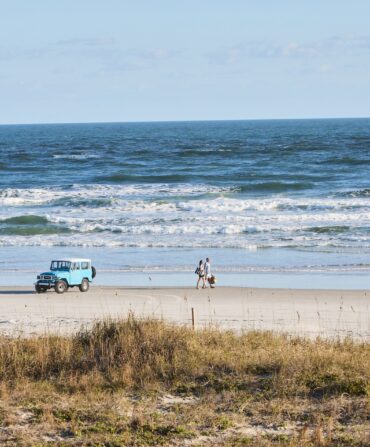City Guides
Destination Oxford, Mississippi
The Little Easy no more
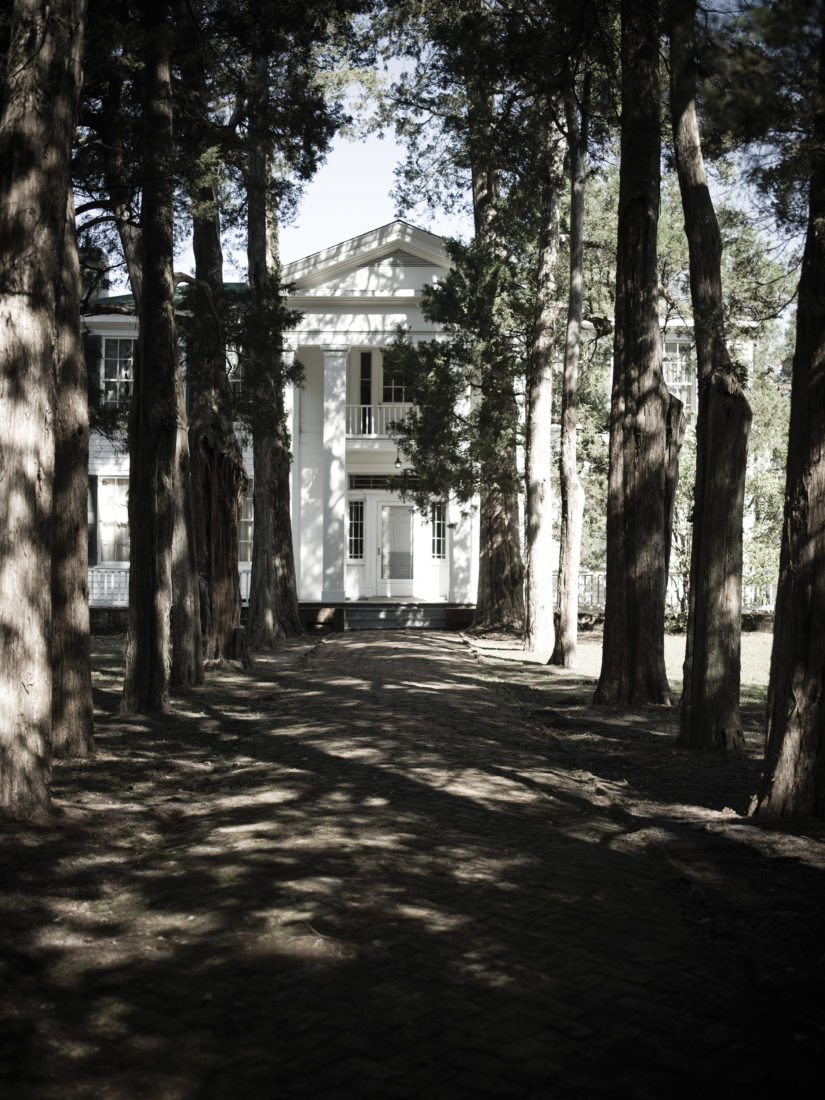
Photo: Josh Gibson
Beautiful, bucolic St. Peter’s Cemetery, a few blocks northeast of the bustling town square in Oxford, Mississippi, is full of ghosts: dead rebels and veterans of all the wars, flu and yellow fever victims, venerable professors and mammies, precious infants, a statesman or two, such as Lucius Quintus Cincinnatus Lamar, and, some would tell you, writer Willie Morris’s beloved old Labrador retriever, Pete. Up until a couple of years ago, this was the most peaceful place in town.
Bluebirds still swoop through the old cedars, and deer and silver fox roam the ancient boxwoods. Quiet, except for the owls calling in the dark, and mourning doves crying at dawn.
But sometimes now, late at night, when folks walk their dogs or wander home from the bars and restaurants on the Square, and they pass the cemetery, it’s said that there’s another sound, something like the soft, muffled but insistent thud that khakis, old tweeds, and brogans might make tumbling in a clothes dryer. Some say it’s the sound of America’s greatest writer and Oxford’s most famous citizen, William Faulkner, spinning in his grave.
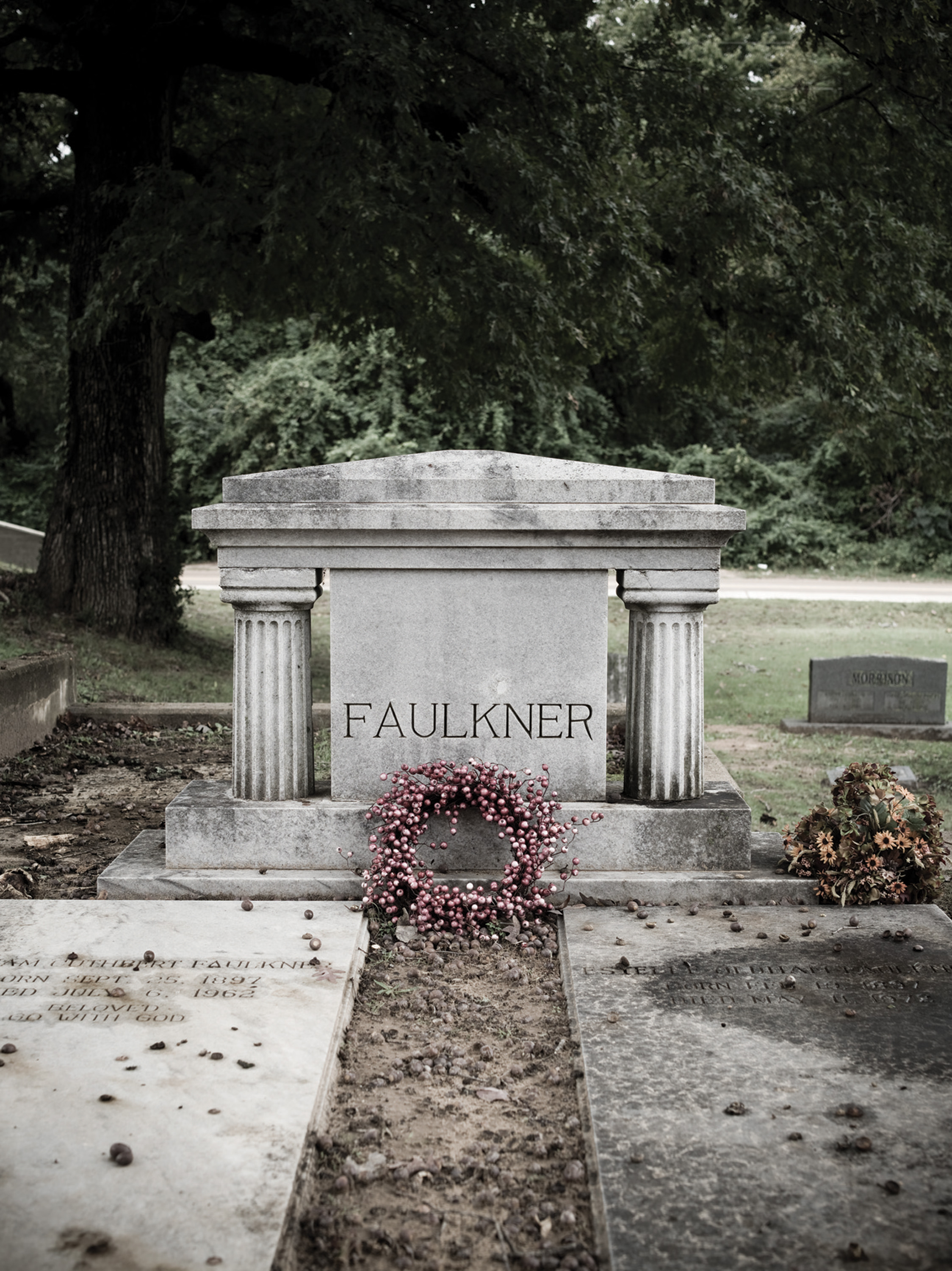
Photo: Josh Gibson
Faulkner's grave at St. Peter's Cemetery
Whether they believe in ghosts or not, everyone agrees that if Faulkner returned for a visit to what he liked to call his “little postage stamp of native soil,” and the place upon which he based his mythical town of Jefferson and Yoknapatawpha County, he wouldn’t recognize it. Like they say about Jesus’s second coming, “He’s back. And he’s not happy.”
Not too many years ago, in the early 1990s, during the annual Oxford Conference for the Book, an all-star panel featured authors Pat Conroy; his dad, the Great Santini; John Grisham; and Barry Hannah. A memorable and mostly harmonic convergence anyway, the event was made historic when Conroy declared Oxford “the Vatican City of Southern Letters.” Oxford had become something of a mecca for both acclaimed writers — Willie Morris, native son Larry Brown, Grisham, and Hannah — and the unacclaimed. Would-be and wannabe authors flocked here attracted by a funky little university town where all ages and backgrounds mixed; a burgeoning music scene; a good bookstore; an art theater; the chance to run with the Big Dogs, and maybe take a writing course at Ole Miss. Jim Dees, a local writer and host of Thacker Mountain Radio, broadcast from Off-Square Books, dubbed Oxford the Little Easy, i.e., a teeninecy version of New Orleans.
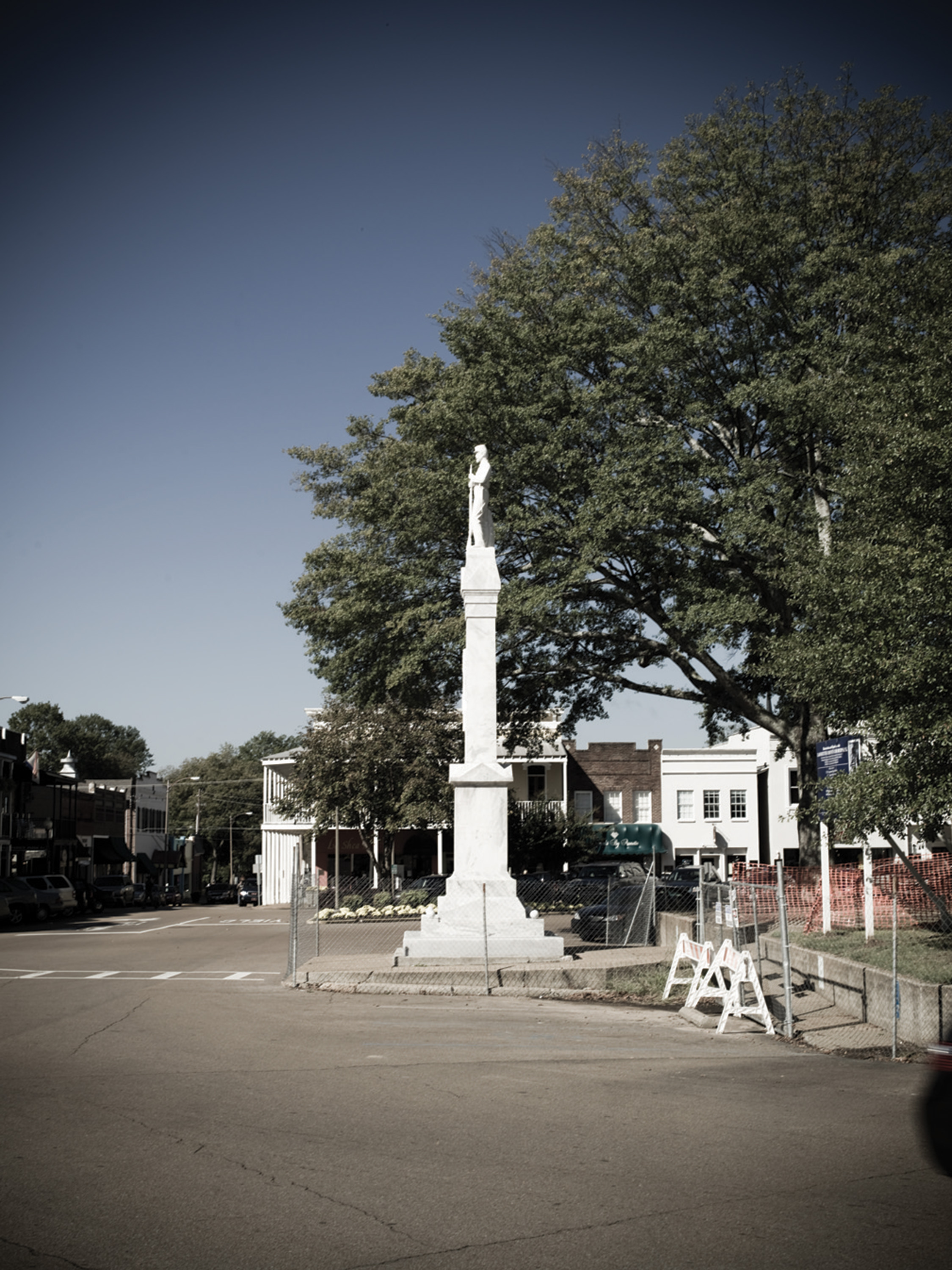
Photo: Josh Gibson
Confederate Monument
But maybe Oxford should have been called the Too Easy because something else began to happen. Attracted by Oxford’s charm and culture, cheap real estate, and just possibly by the opportunity to watch Eli Manning play football, or spot his even more legendary daddy, Archie (Ole Miss folk hero: quarterback from 1967 to 1971; All-American, All-Pro, and patriarch of America’s first family of football), strolling the Square or chowing at City Grocery, older Mississippians of means also began a new stampede to Oxford, buying small weekend homes and, when they suddenly started popping up all around the Square, condominiums.
The characteristic little frame cottages and brick bungalows, old woods, and nineteenth-century commercial buildings that give Oxford its Southern small-town appeal were being demolished, some literally overnight, to make way for more condominium developments and monster McMansions shoehorned onto tiny lots like Mammy squeezing Scarlett into her gown for the Twelve Oaks barbeque. Realtors and developers, many from away, scurried in like possums to a trash barrel to cash in on the land rush without regard for what the drastic changes might mean for Oxford’s future. Without stringent zoning or preservation laws, the town was like a deer in the headlights — overwhelmed and unprepared. It’s a familiar phenomenon that has happened everywhere. But many Oxonians don’t want to see Oxford become everywhere. Or a weekend amusement park. Already there are signs that the character of the town has changed in ways other than the visible. The argument isn’t exactly against condos per se, or people moving to Oxford; it’s about destroying the historic and characteristic things that make Oxford Oxford. Whether or not the town will be able to get a hold of itself, deal with the frenzied growth and snowballing changes, and preserve its uniqueness remains to be seen.
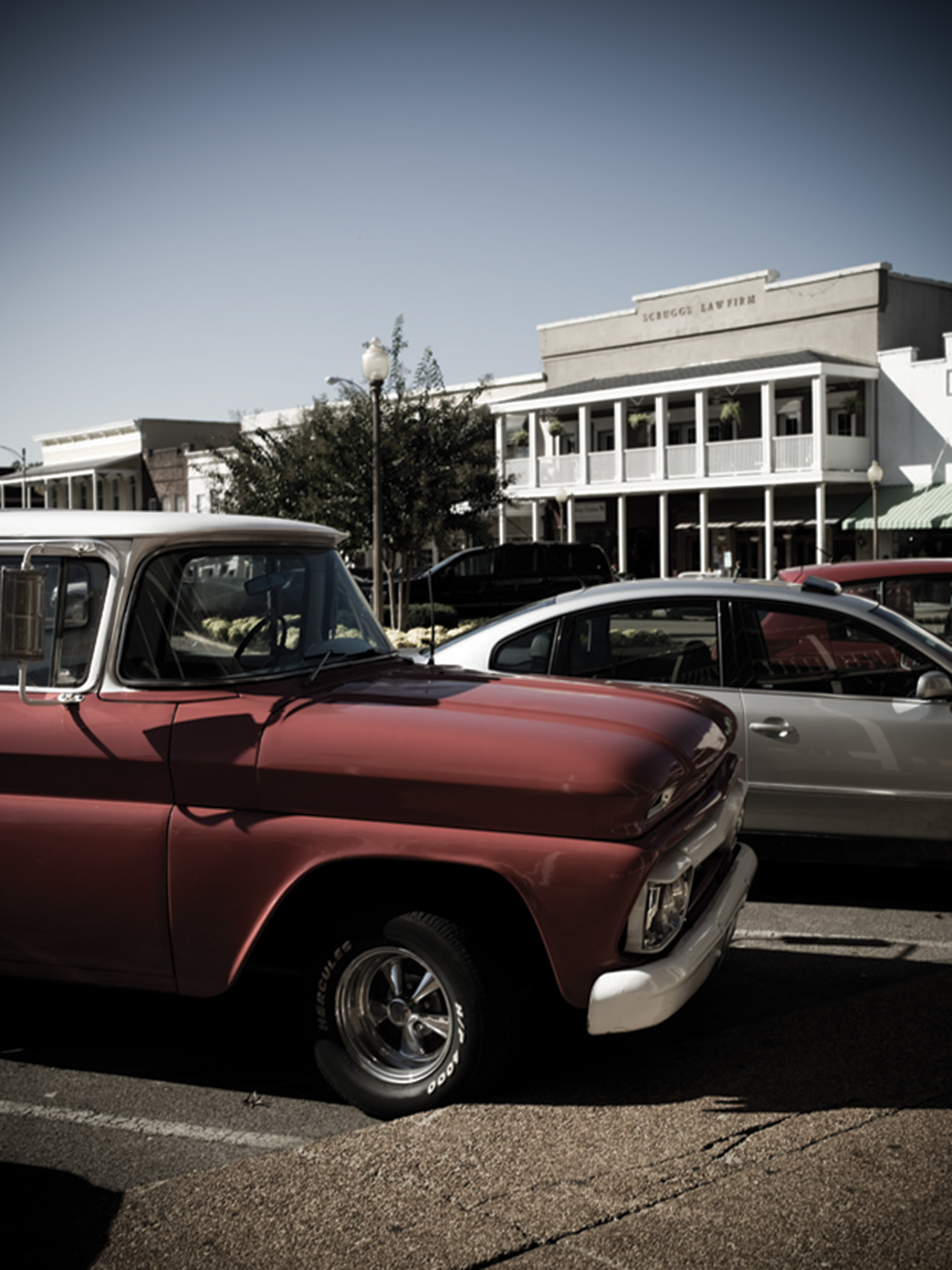
Photo: Josh Gibson
Modern-day Oxford
Oxford in Faulkner’s day (he was born in New Albany in 1897) was a quaint stop in the North Mississippi hill country (highest elevation: 806 feet), on the Illinois Central Railroad line. Mainly, the Oxford stop was to move cotton and students around. A relatively new town by Eastern standards, Oxford as a white settlement goes back only to 1836, when Lafayette (pronounced La-FAY-ette) County was one of thirteen counties created by the state legislature. But before that, the area had been home to the Chickasaw and earlier groups for around twelve thousand years. In 1837, three men purchased fifty acres for a town from two Chickasaws, Hoka and E Ah Nah Yea, who no doubt saw the writing on the wall: The site was on the Trail of Tears, along which a year later Native Americans would be forced westward. Early Lafayette County settlers named the new town Oxford after Oxford, England, hoping to found the state’s first university there, and hope became reality in 1848 when the University of Mississippi opened its doors to admit eighty students. Its first chancellor was F.A.P. Barnard (he later went on to found Barnard College in New York City), who intended to make the university “the Harvard of the South” and began building an ambitious, state-of-the-art observatory. Unfortunately, the Civil War broke out in 1861 and many of the students joined the University Greys, which the state enrolled in the 11th Mississippi Volunteer Infantry Regiment. The school closed and, tragically, the University Greys, after fighting in several big battles, met with 100 percent casualties (death, injury, or capture) during Pickett’s Charge at Gettysburg. As if this blow weren’t enough, in 1864 most of downtown Oxford was incinerated by the troops (drunken, legend has it) of Union General A. J. “Whiskey” Smith. On campus a few buildings survived, including the new observatory, which was preserved by an earlier order from Gen. William Tecumseh Sherman, who wrote to his friend Barnard (whom he had known while teaching at Louisiana Seminary, later to become LSU), “When I rode through the grounds of the college, I thought of you… and… thought I saw traces of your life, of which I remember you spoke.” The observatory, restored in 1992, now houses the Center for the Study of Southern Culture.
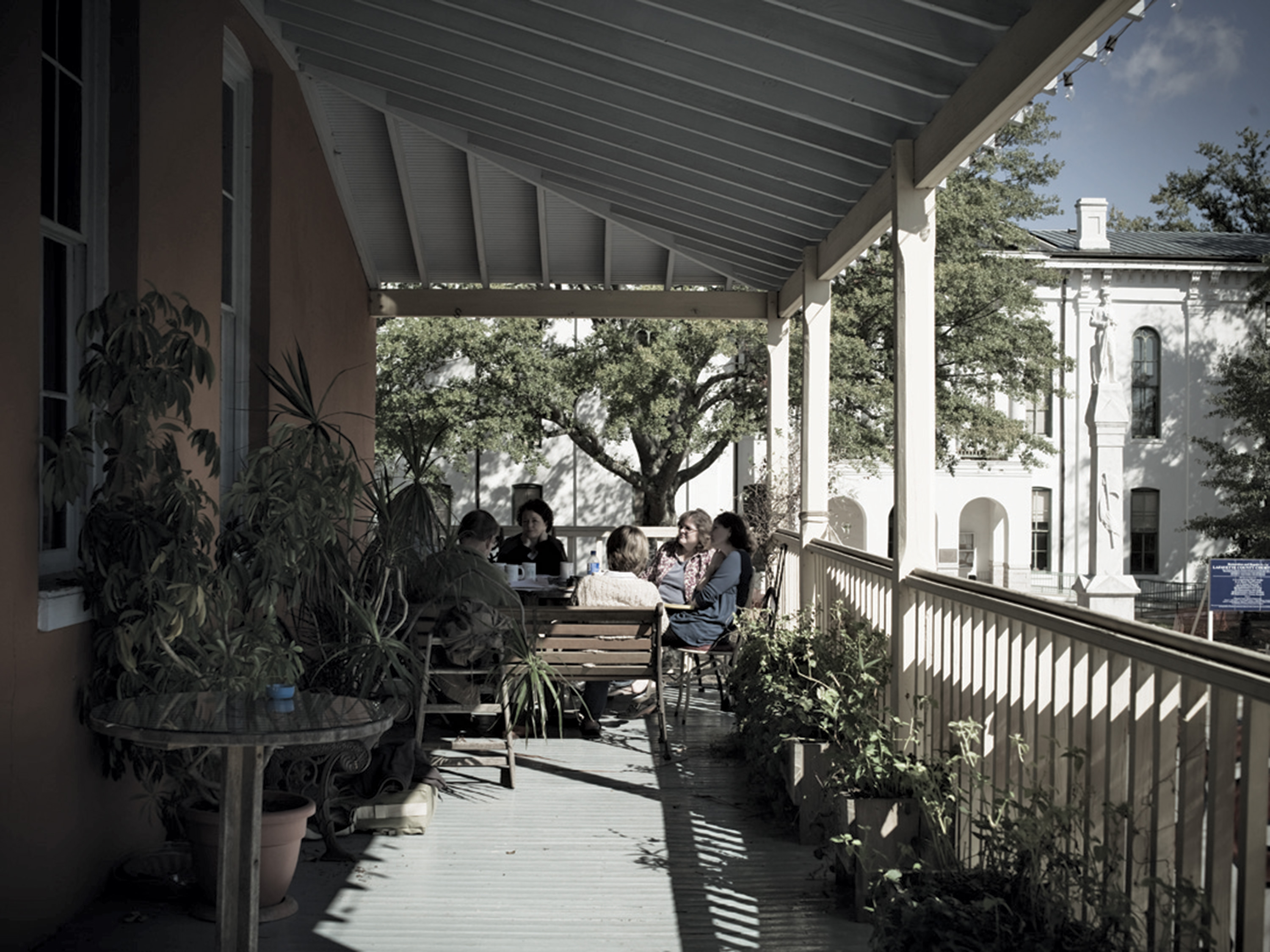
Photo: Josh Gibson
The balcony at Square Books
After the war the town picked itself up and rebuilt; in 1865 the university reopened with eighty-six students, and Oxford again grew to be a thriving “handsome little town,” as a Chicago war reporter described it before the razing. Like many small towns across the South, commerce was driven by cotton and small business, and most Oxford residents enjoyed the idyllic town-and-gown atmosphere.
In 1949, William Faulkner won the Nobel Prize, astonishing many Oxonians and bringing international attention to the town for the first but not the last time. James Meredith’s bold effort in 1962 to enroll at the University of Mississippi, and the ensuing riots, during which two people were killed and scores were injured, marked an all-time low for Oxford, with none of the romantic dignity and Lost Cause sentimentality of Civil War events. It was years before the university recovered and was able to attract top-notch faculty and students. Now, about 13 percent of Ole Miss’s undergraduate student body is African American (the state’s black population is nearly 37 percent), and many would argue, with the exception of fraternities and sororities, equality has largely been achieved on campus. Many would also argue that in the Oxford community there is still work to be done.

Photo: Josh Gibson
Cotton field
In the seventies, the wonder years of malls and Wal-Mart, Oxford might well have gone the way of many small Mississippi towns where the town square lost its draw. But anchored by Neilson’s Department Store (“the South’s Oldest Store”) and a handful of locally owned businesses that hung on — a hardware store, a dry cleaner, a barber shop, the county co-op, a pharmacy, and James’ Food Center, the most revered grocery store there ever was, where one could buy anything from just-picked local produce to pork fries (if you don’t know, don’t ask) — the Square would not go down. You could really take care of business on the Square without a car if you lived in the old neighborhoods, or if you lived in the country you could catch a ride by standing around James’, in front of the sign that said, “DO NOT STAND HERE AT ANY TIME FOR ANY REASON.” The Square dug in and lived and then flourished with the opening of Square Books and the Hoka Theater and beer becoming legal (and though, to this day, it still can’t be bought cold in stores, a can can be spun on ice to perfection in ninety-six seconds). Suddenly, Oxonians and students had places to go and things to do, and the Square was revitalized.

Photo: Josh Gibson
So, by the 1980s Oxford’s golden age was in full swing. Square Books was having readings and book signings, drawing literary lights such as William Styron, Toni Morrison, and Richard Ford. The Hoka had a café and showed classic, cult, and X-rated films, and was a spot where anything might happen, like the memorable night when Allen Ginsberg, after an event at the bookstore, drifted over to the Hoka with his harmonium and performed, ignoring the catcalls and rattling coolers of the frat boys who’d come expecting to see the midnight porn. There was a great music scene as well, with local musicians such as Jojo Hermann, who would eventually play keyboardsin Widespread Panic, and John Stirratt, a founding member of Wilco, playing around town with various musician configurations. Fat Possum Records began seeking out and eventually recording the last of the old hill country bluesmen, most notably Junior Kimbrough and R.L. Burnside. At the same time, at the University of Mississippi, the Center for the Study of Southern Culture, established in 1978, was up and running and attracting scholars and big names who came for programs and to teach courses, like the late New York Times rock critic Robert Palmer. B.B. King, a native Mississippian, donated his record collection as the core of a blues archive, and the center took over publication of a standard in blues scholarship: Living Blues magazine. Barry Hannah, Larry Brown, and John Grisham were all here writing, as was Willie Morris, holding court and teaching journalism. A common sight in those days, too, was Memphis photographer William Eggleston, the father of modern color photography, skulking around town with his camera. It was a wildly rich and highly charged time, when you could hear James Dickey read poetry and still buy a sack of feed corn on the Square. A literary center, but still a real Southern town, too.
In recent years, the town has gained more good places to eat, more upscale stores, more music venues, and more people (the population is now twenty thousand, about twice what it was fifteen years ago). The Center for the Study of Southern Culture hosts several acclaimed annual conferences, among them the Faulkner and Yoknapatawpha Conference, the Oxford Conference for the Book, and always riotously, the Southern Foodways Symposium, which attracts foodies and food writers from Alice Waters to Calvin Trillin to Mike “Rathead” Riley, from Bristol, Virginia. The university opened the Ford Center, a state-of-the-art performance facility, and with Barry Hannah at the helm, established a thriving MFA program in creative writing. The Grishams, John and Renee, underwrite a generous visiting writers program that brings many emerging Southern writers to campus (current feathers in that cap include Jack Pendarvis, Beth Ann Fennelly, and Tom Franklin). Recently the city of Oxford created an impressive bike path and skate park, and gave the community arts council its old power plant, which has been converted to multiuse art and event space.

Photo: Josh Gibson
Square Books
It’s hard to argue against success and prosperity, but it’s also hard to deny that much has been lost and Oxford’s golden age is over. Gone are the pharmacy and the hardware store; and the dry cleaner, the original James’ Food Center, and the Hoka have been leveled for new buildings. Gone is the funky old ice house, replaced by the Ice House Condominiums. Gone are the woods across the street from Faulkner’s grave, replaced by the Oak Park Condominiums. Gone are Willie and Larry; John has decamped to Virginia; the Oxford American is now at the University of Central Arkansas; and Fat Possum Records is moving to Austin, Texas. Small businesses, young couples, musicians, students, teachers, bartenders and waitresses, city employees, and low-income families are being displaced by soaring rents and property values.

Photo: Josh Gibson
Ventress Hall
Oxford is still beautiful, still historic, still intriguing, and still like no other place. In recognition of that, city aldermen have finally enacted a preservation ordinance for historically significant neighborhoods and created a planning commission, and citizens have organized historic preservation commissions — positive signs that the town is learning the value of something special that it has that can’t be bought, sold, or built. Nonetheless, clearly Oxford has gone down to the crossroads, and whether or not new rules and planning commissions will have any teeth, or whether money will still do the talking is, as they say, a whole ’nother question. Will the Little Easy be the Little Greedy, where trash-and-cash Snopesism prevails?
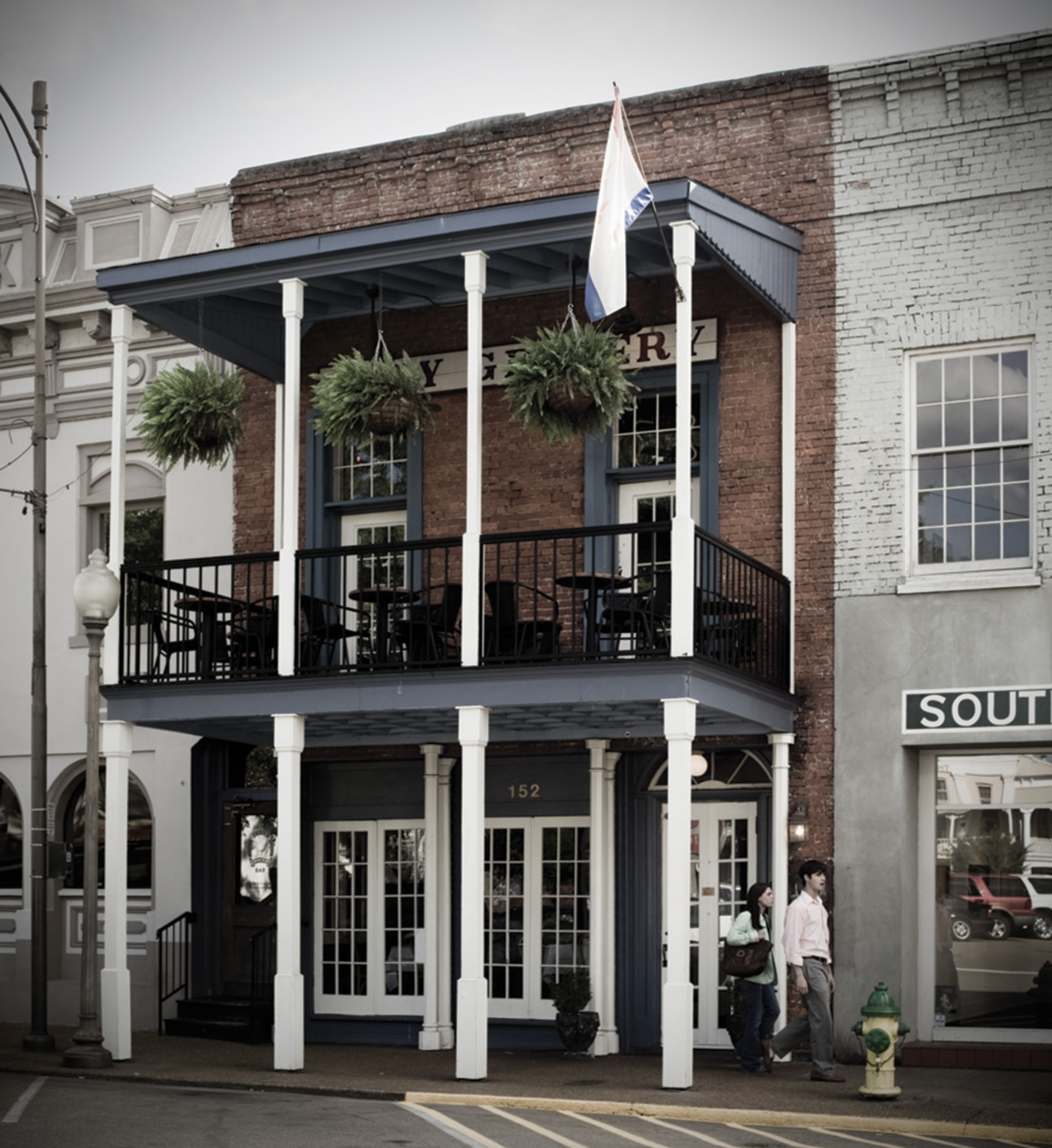
Photo: Josh Gibson
City Grocery
Spinning now or not, Faulkner called for preservation even in his day. In 1947 he wrote a letter to the Oxford Eagle arguing for preservation of the county courthouse, which he hoped would not meet the fate of the old Cumberland Church, which had withstood the 1864 burning of the Square, but “wasn’t tougher than the ringing of a cash register bell” and had been ruthlessly torn down. Mad as hell, he went on to say, “They call this progress. But they don’t say where it’s going; also there are some of us who would like the chance to say whether or not we want the ride.”
Amen.


